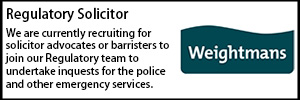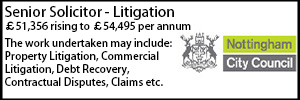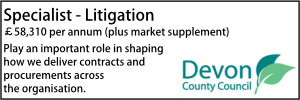Council fails in bid for final injunction prohibiting defendants from anti-social behaviour in any public space in borough
- Details
A High Court judge has rejected an application by the London Borough of Hackney for a final injunction prohibiting a number of defendants until 13 September 2022 from engaging in various activities which were said to constitute anti-social behaviour and/or public nuisance in any public space in the borough.
Hackney applied for the injunction because there had been an unauthorised encampment on part of Hackney Downs between 13 or 14 July and 13 August 2021 and the individual defendants were said to have been part of that encampment.
The encampment on Hackney Downs was one of a series of encampments this summer by a group of people seeking to protest, inter alia, about Government policy in response to the Covid-19 pandemic.
According to a statement from Hackney’s Parks Operations Manager, the encampment originally consisted of about 11 tents and 20 people and grew to about 24 tents.
On 12 August 2021 Master Cook made an order for possession. The occupants of the encampment were evicted on 13 August 2021.
This was also the day on which Ellenbogen J made an interim injunction in the present action, without notice to the defendants.
The defendants were prohibited until the return date of 16 September 2021 from organising or participating in a range of activities in the whole of the borough of Hackney (the prescribed area). A power of arrest was attached to the prohibition on using or threatening violence.
In The London Borough of Hackney v Grant& Ors [2021] EWHC 2548 (QB) Mr Justice Lavender was asked to continue the prohibitions contained in the interim injunction and the power of arrest until 13 September 2022.
The High Court judge said he was prepared to accept that there had been some anti-social behaviour, particularly in the form of noise, and perhaps also a single instance of violence.
However, he did not consider that at this stage it was just and convenient to grant an injunction for the purpose of preventing the defendants from engaging in anti-social behaviour.
Mr Justice Lavender said he had reached this conclusion because:
(1) There was no evidence that any of the defendants were currently in Hackney, “let alone camped in a public space in Hackney”.
(2) The reason for seeking the interim injunction was the risk that when evicted from Hackney Downs the defendants would immediately attempt to occupy another park or open space in Hackney. That did not happen.
(3) Those defendants who were still engaged in the protest were now in Brighton and had been there for over a month.
(4) He had no evidence as to when the individuals encamped in Brighton would be evicted, but he assumed that it was likely that they would be. Two of the defendants appeared to expect that.
(5) Hackney had no specific evidence, such as up-to-date police intelligence, to suggest that any of the defendants were likely to return to Hackney when evicted from their current site in Brighton.
(6) Two of the defendants pointed to the pattern of their conduct. Each of the four encampments had been in a different local authority's area.
(7) While not indicating any specific plans, they claimed that their next move might be to another city altogether, such as Manchester.
(8) [Counsel for Hackney] submitted that there was a risk that the defendants might return to Hackney, but she could not point to any evidence which made that risk any greater in the case of Hackney than in the case of any other urban area in the country.
Mr Justice Lavender stressed that he was not saying that the interim injunction was unjustified. “On the contrary, there was at that stage some evidence that the defendants might move elsewhere in Hackney. But there is no longer any such evidence.”
The judge said that, for the same reasons, he did not consider that it would be appropriate to grant an injunction to prevent a threat of public nuisance.
Must read
Local authority legal teams after Mazur
Regulatory/Litigation Lawyer
Antisocial Behaviour Legal Officer
Locums
Poll
18-03-2026 1:00 pm
01-07-2026 11:00 am






























